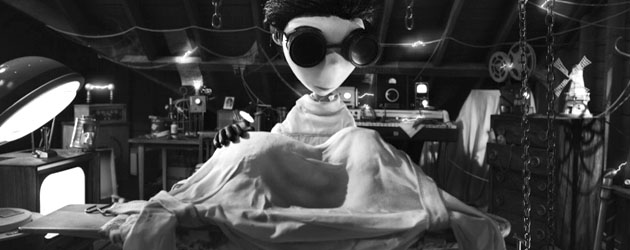Rick Heinrichs

AS: So it’s true he prefers working in the physical world as opposed to CG?
RH: Tim is very much about seeing and feeling and is much less interested in the technology that is required. He loves stop-motion because it is very much a see-feel thing. You can see the object in real life. It’s amazing what we can do digitally with visual effects and it’s changed everything we do. It has become an absolutely essential part of the art department and all the other departments. But there is something inherently mechanical or computational about it.
I remember having these discussions a lot with Gore Verbinski on Pirates of the Caribbean. Gore is also a huge believer of getting as much as possible in camera. Rango not withstanding, which is a completely CG film. But for those things that involved live-action characters it was incredibly important that we capture the immediacy of something spontaneous and alive. Your great visual effects artists and supervisors would agree they are only as good as the information they are given. And while it may be true that you can do anything in CG nobody has that kind of time and money. There are always going to be decisions and compromises that get made along the way. So if you can give them real objects in real light to work with they are always very grateful.
AS: Nathan Crowley described how Christopher Nolan will film actual bats flying around in a space and give that to visual effects as opposed to creating CG bats.
RH: We did bats also for Batman Returns, CG bats, and it was one of the first uses of CG bats that I’d seen in a movie and I remember thinking at the time, What a perfect subject matter for CG because their movement is so erratic and strobey and bizarre! It was actually perfect for the technology of the time.
AS: With the Pirates movies are you involved after principal photography?
RH: I do try to stay involved to a degree. As the process of making films collapses and the whole prep, production, and post fuses into one huge moviemaking period you are going to see a lot more elasticity in the involvement of the designer. It is becoming more clear to studios and producers that it is a continuous process that needs the continuity of a designer. One vision going all the way through.
AS: After doing The Lord of the Rings, Grant Major told me that he prefers to be there the whole time and not just to leave and say, Okay, you guys take it from here.
RH: Doing two movies back to back with Pirates, I got to be on for all of post production for Dead Man’s Chest while we were shooting the following movie. It was great to be able to be the advocate both of the director and of my own vision.
AS: Do you deliberately work with very visual directors?
RH: It’s more fun that way. You’ll see that’s a thread running through a lot of the directors I’ve worked with.
AS: Brad Silberling?
RH: Even Brad. There are a few directors I’ve worked with that draw stick figures. Spike Jonze. Brad. But when you look at their work they are also extremely visual. Brad knows his art. He loves photography and he knows how to talk my language using images.